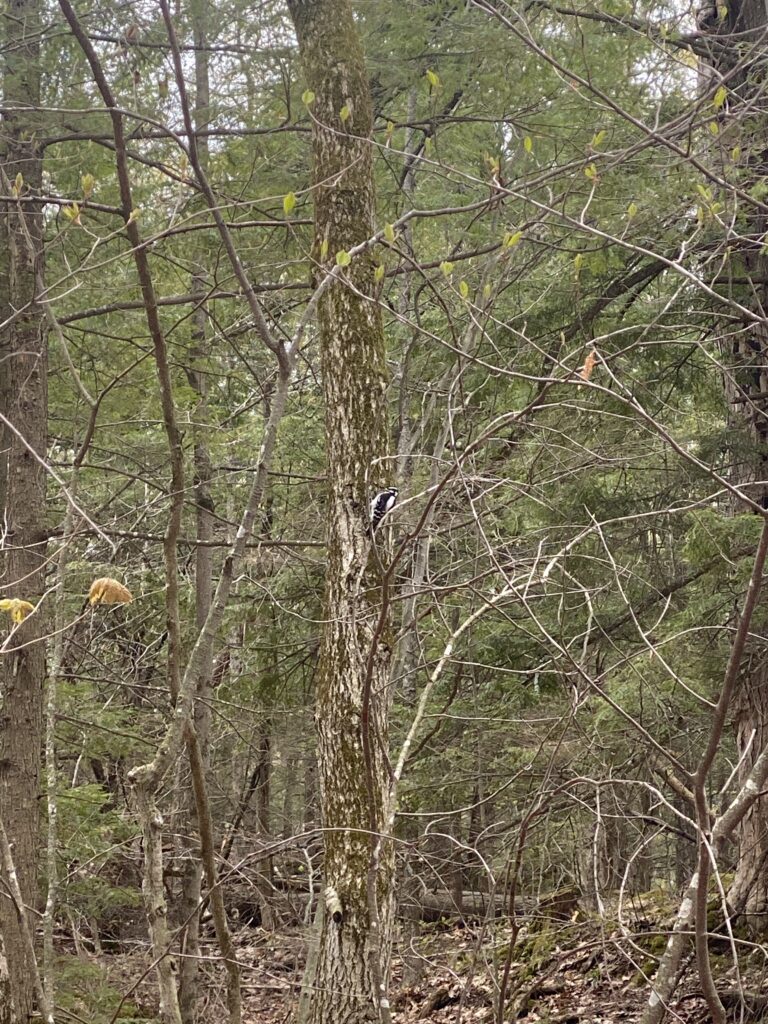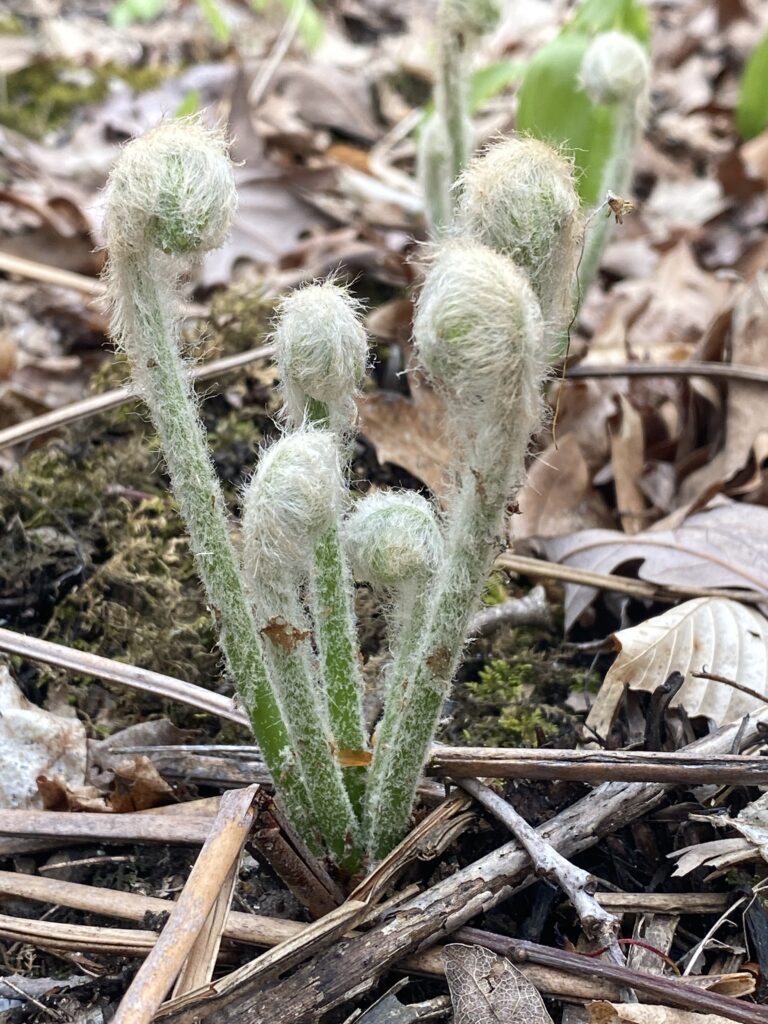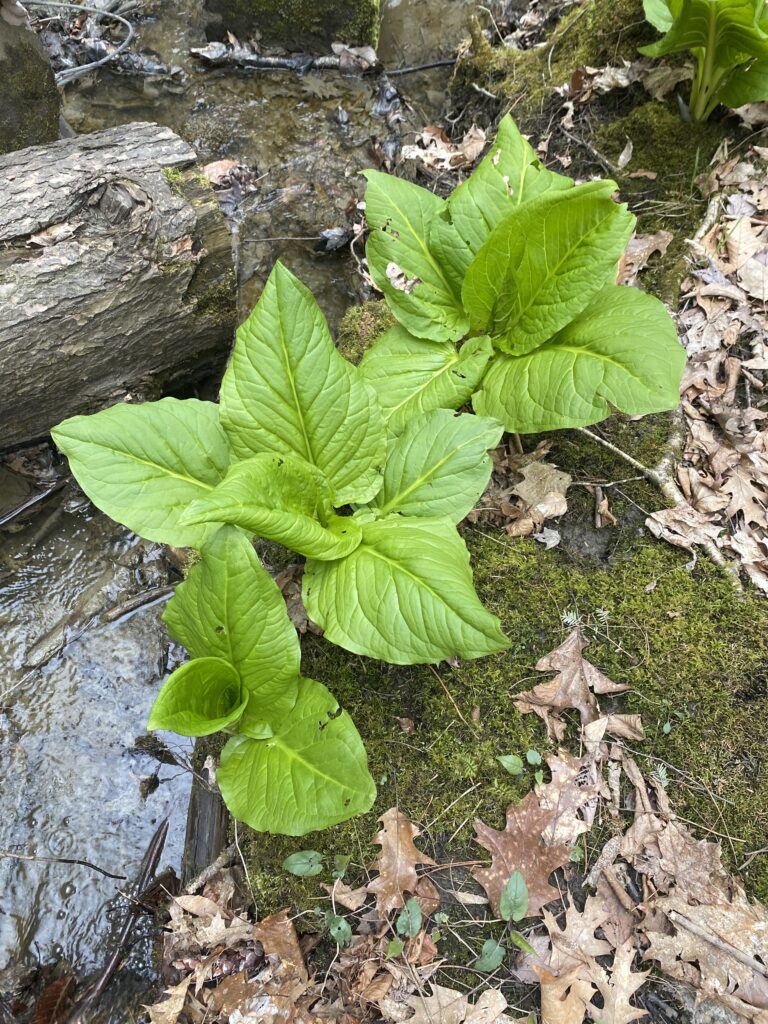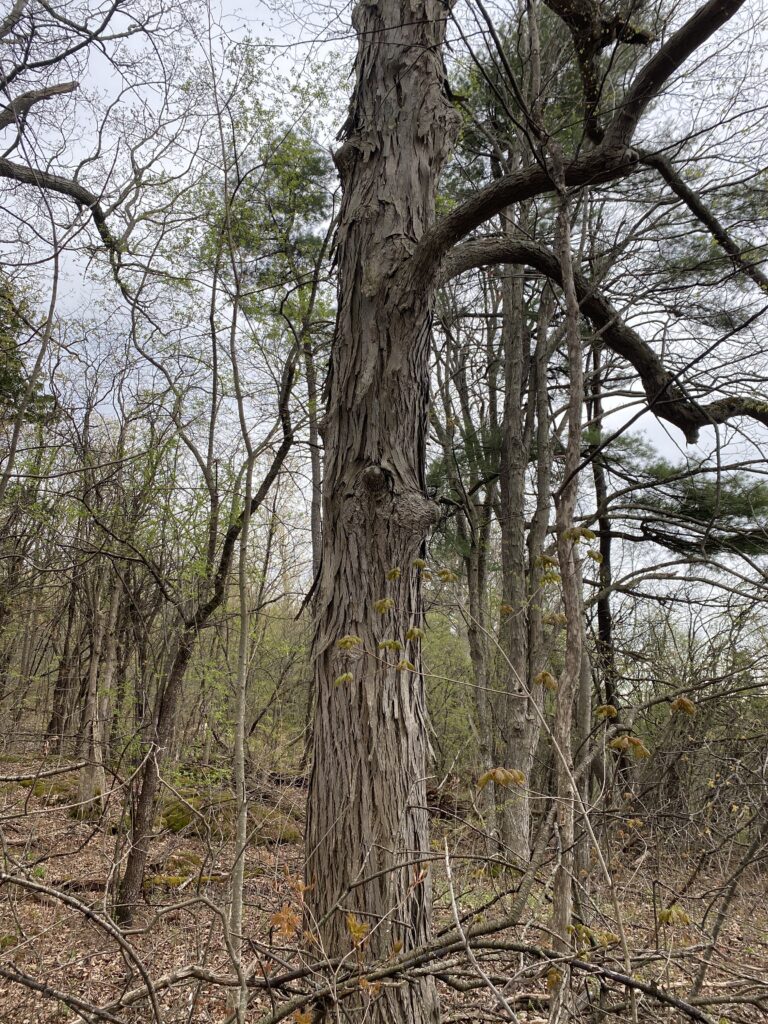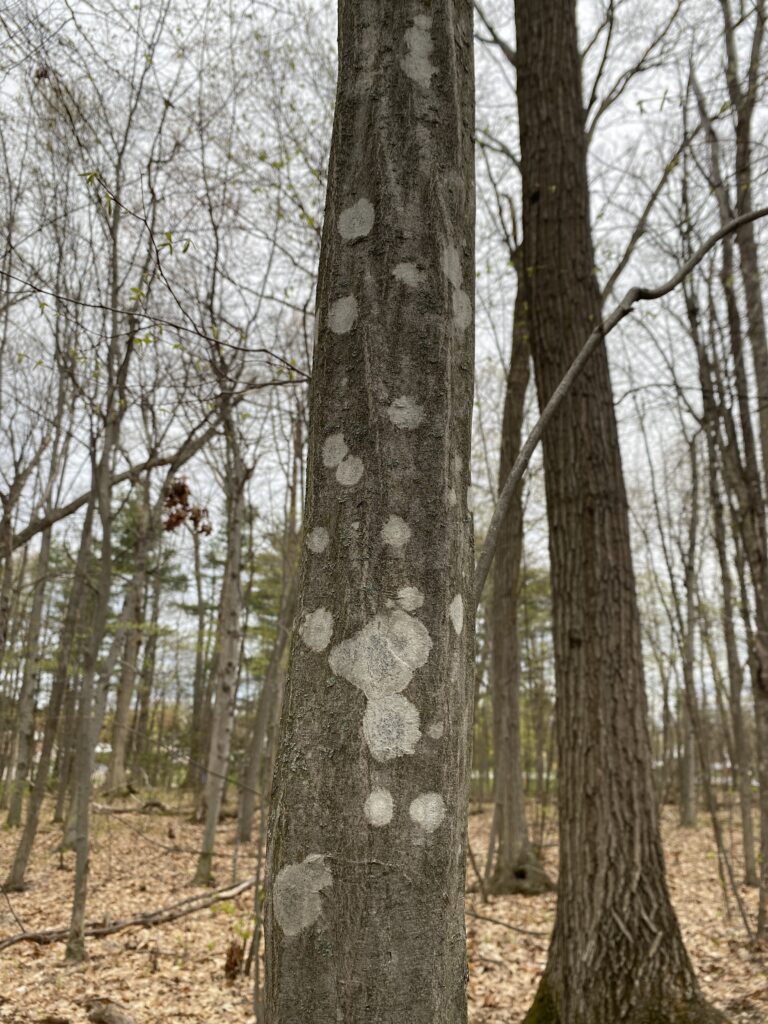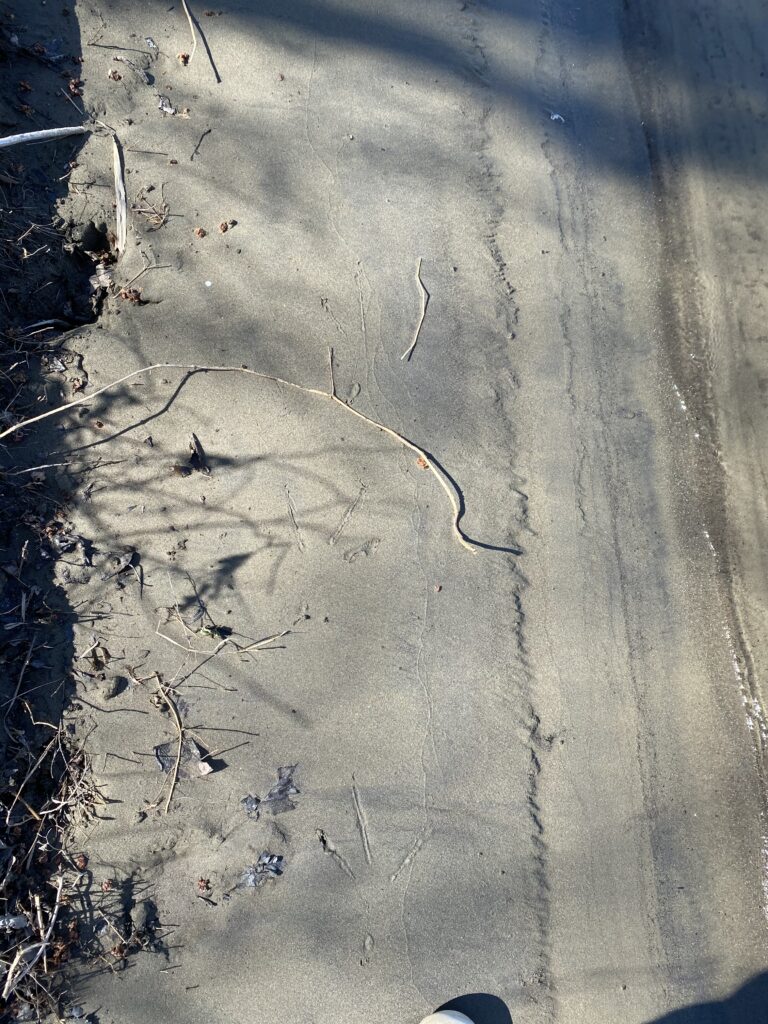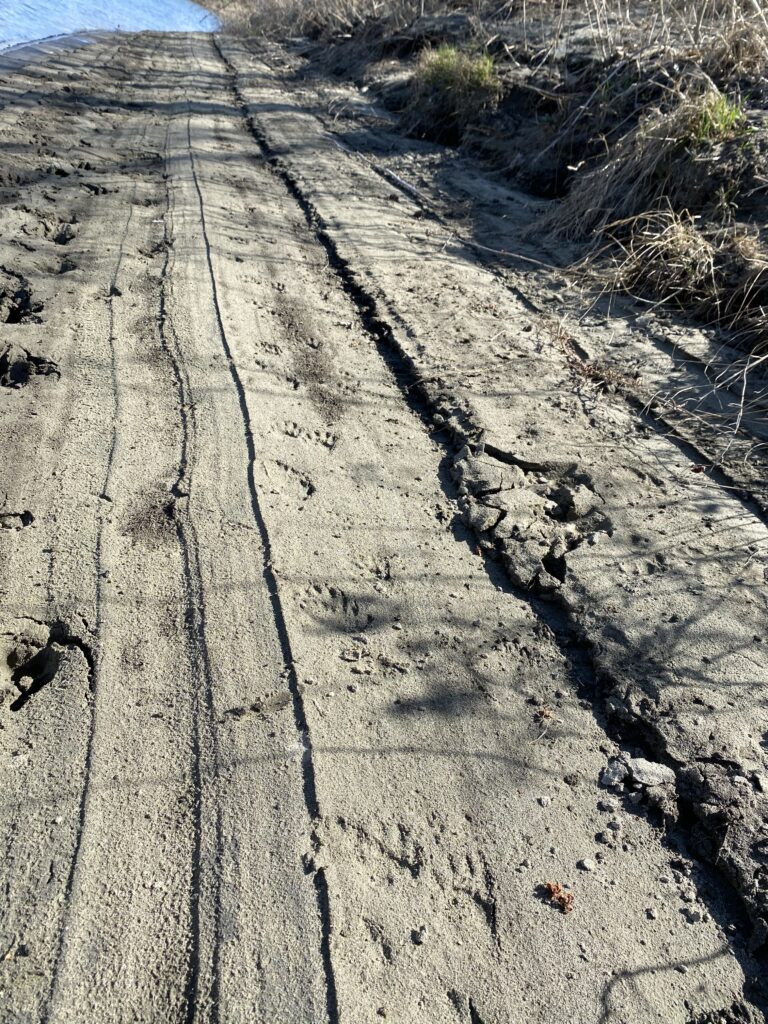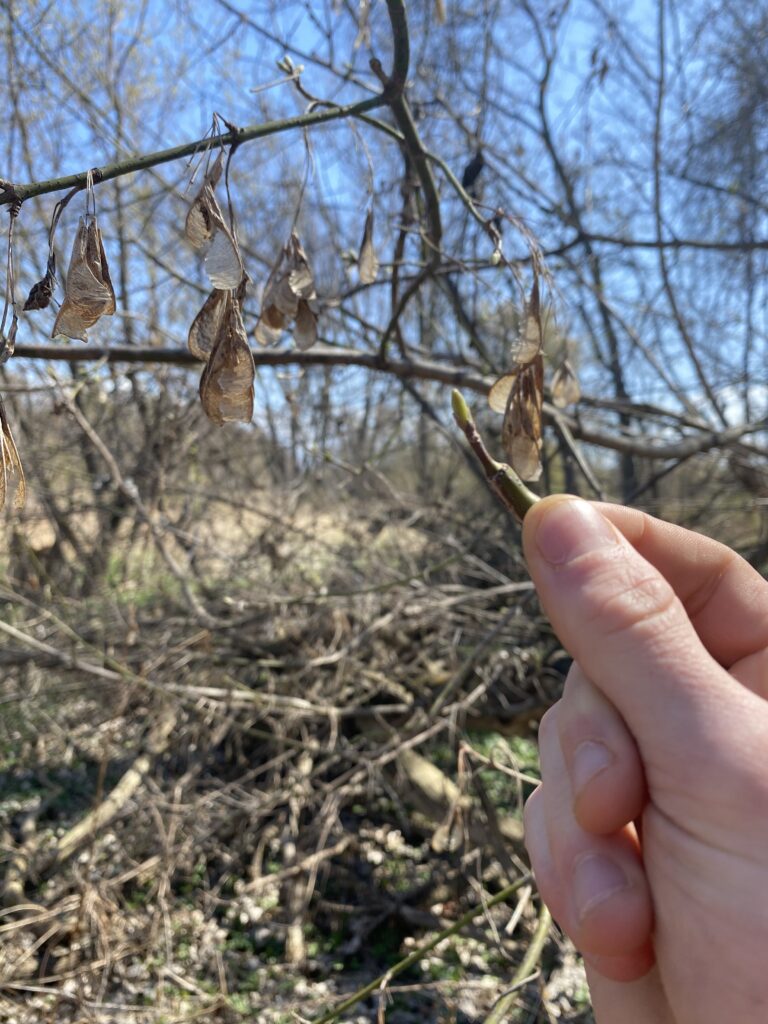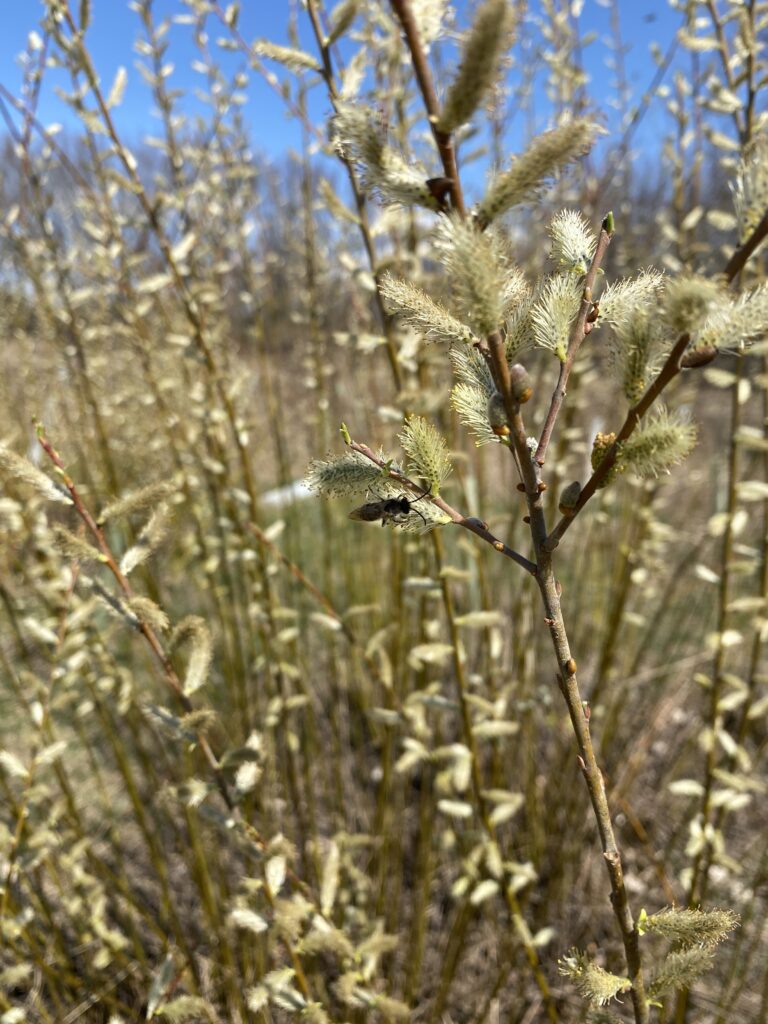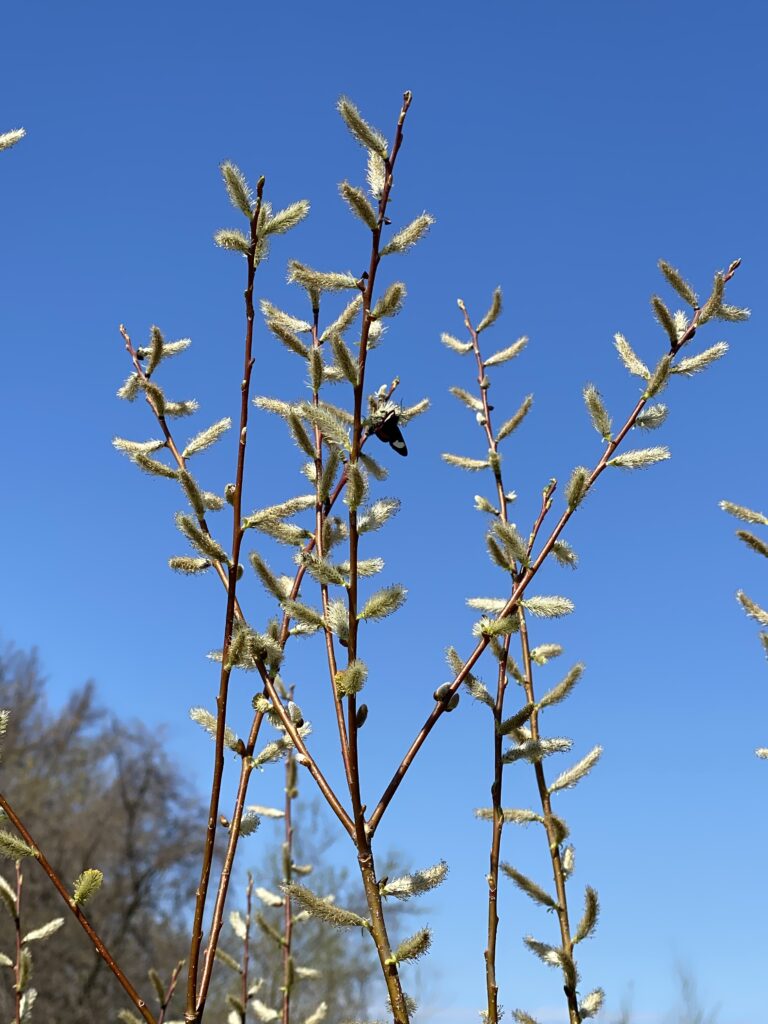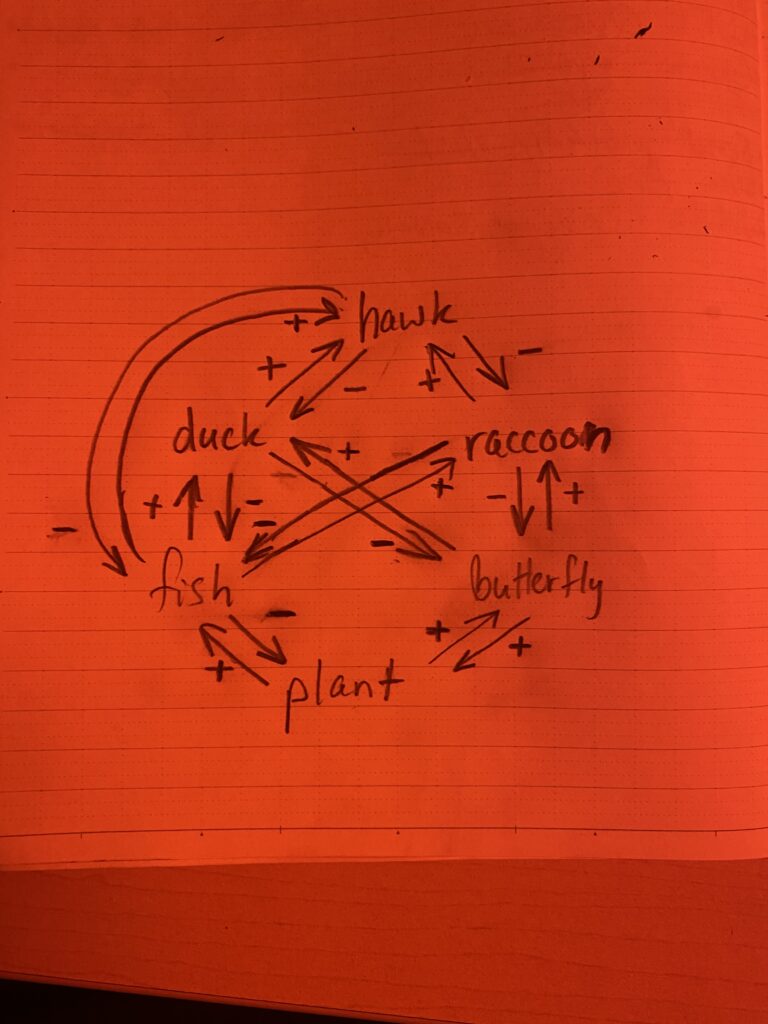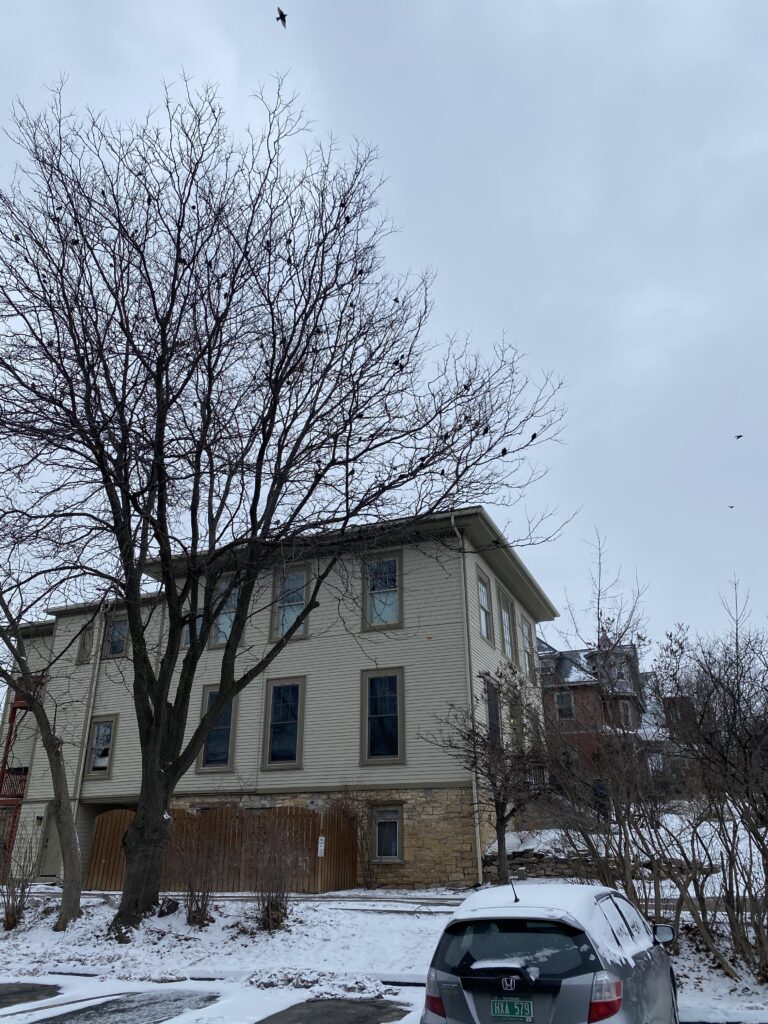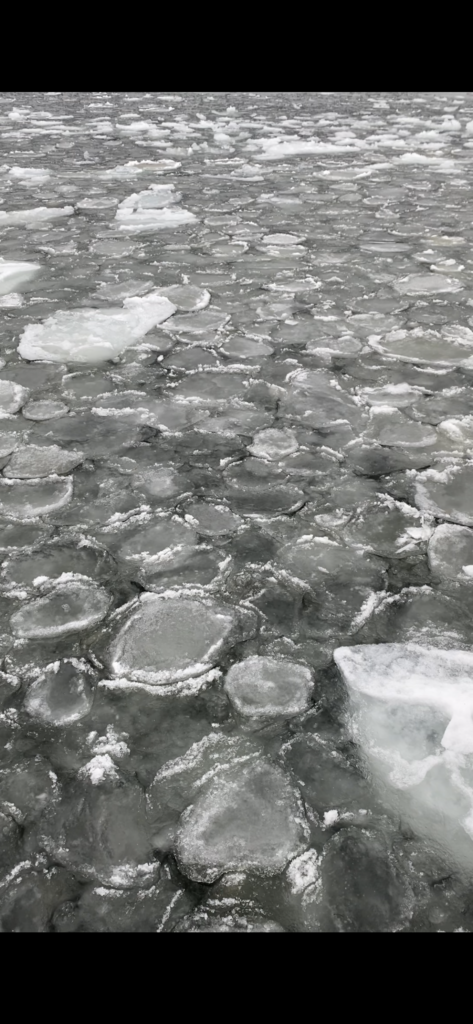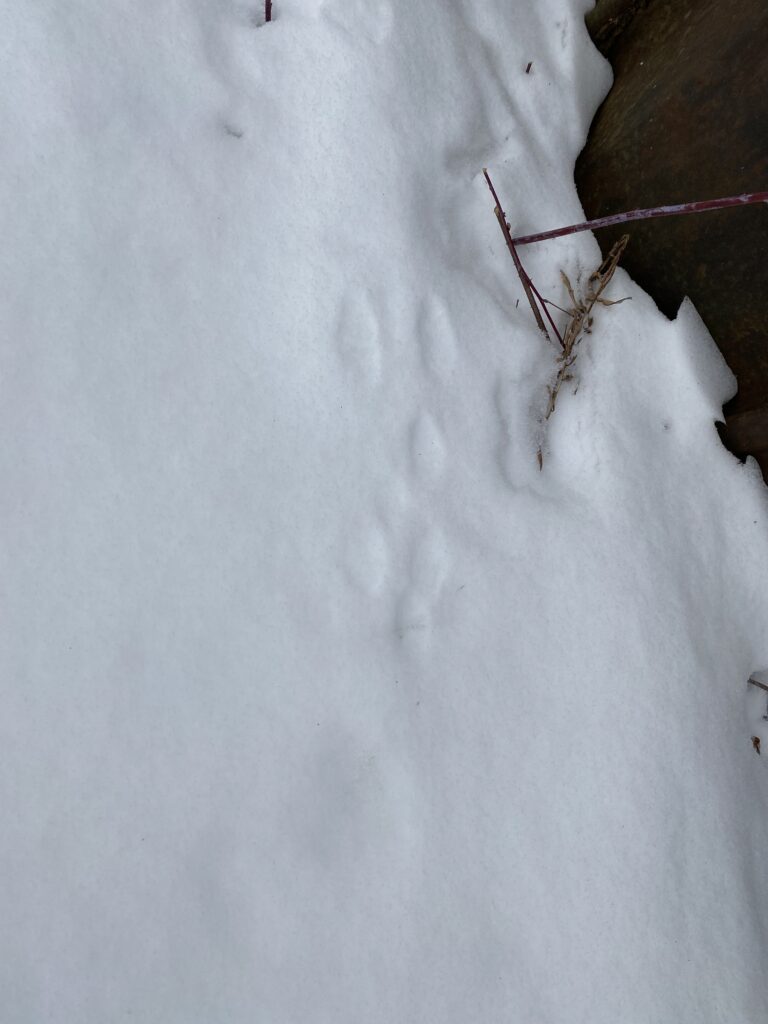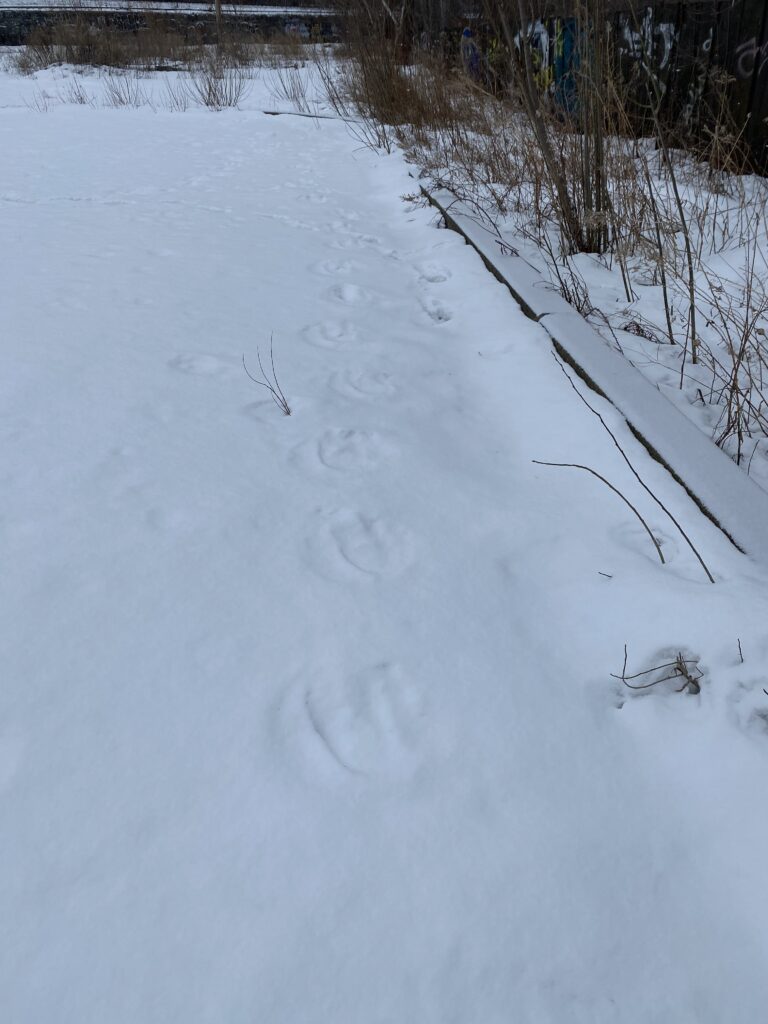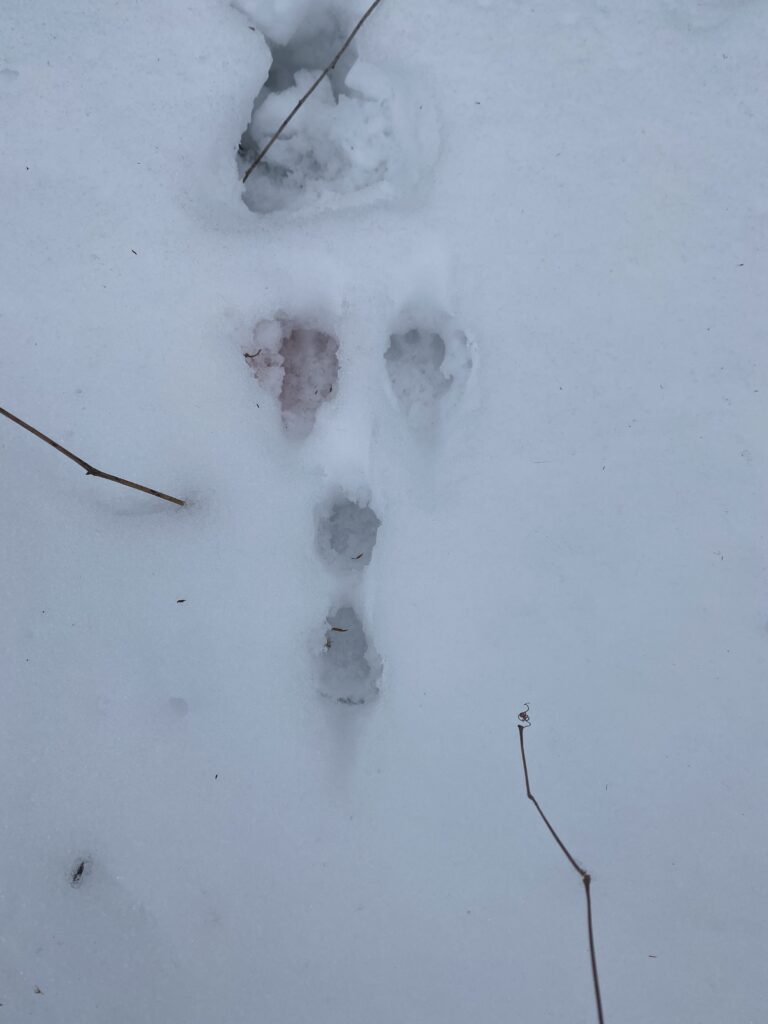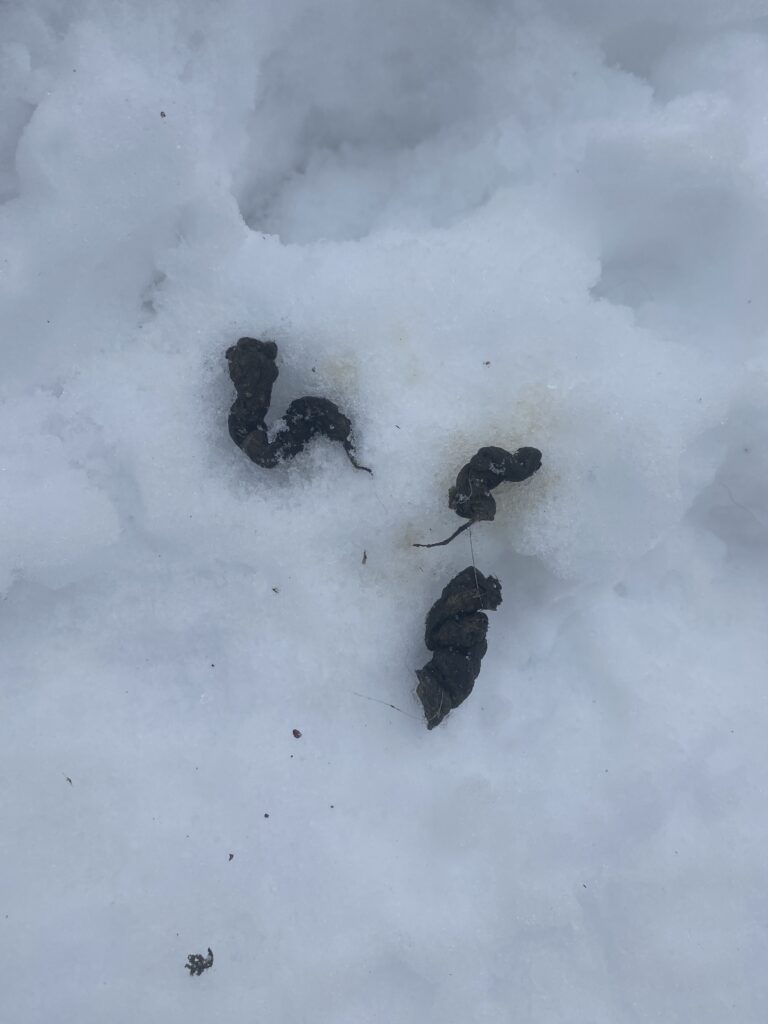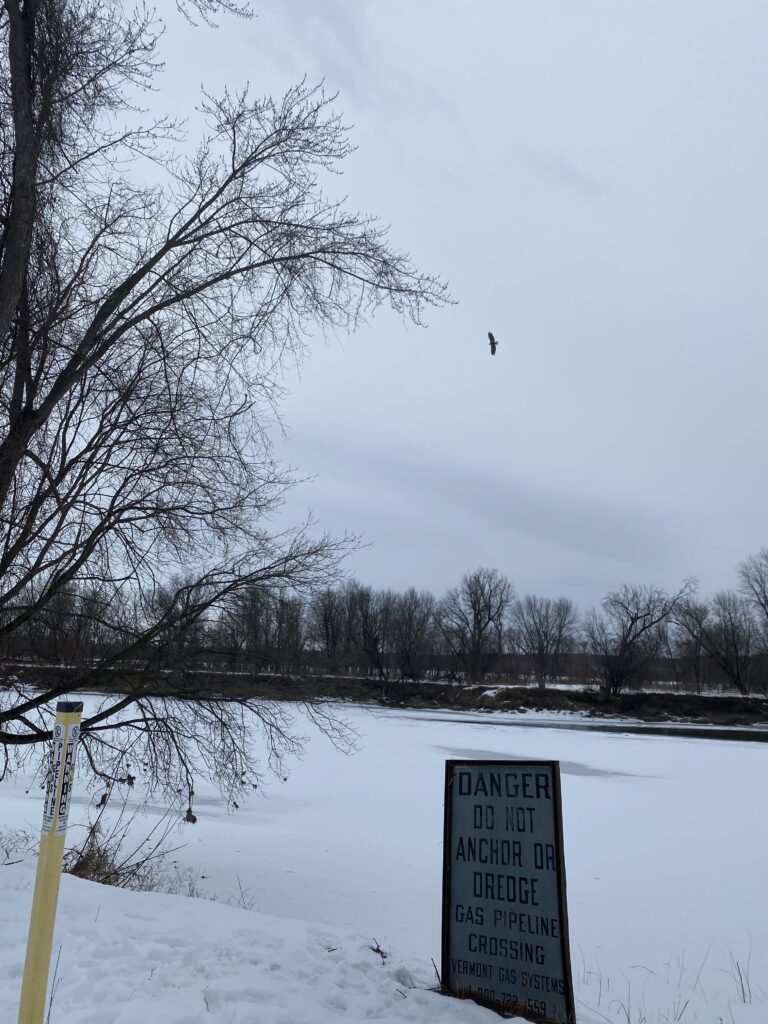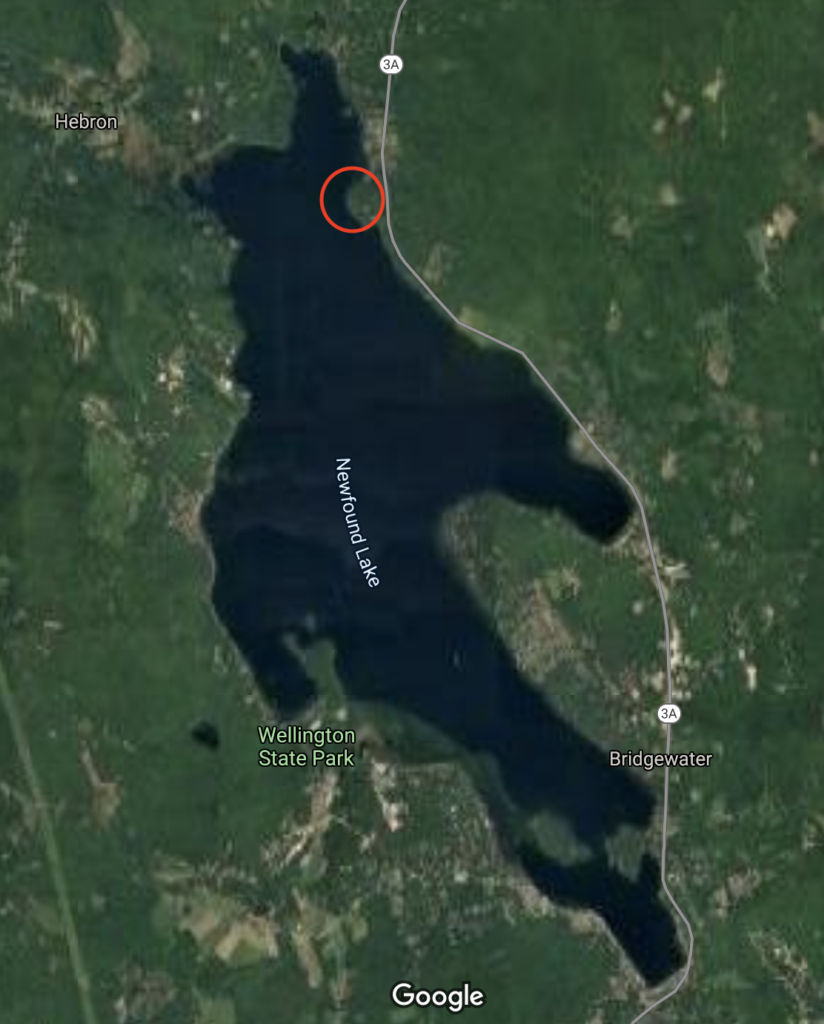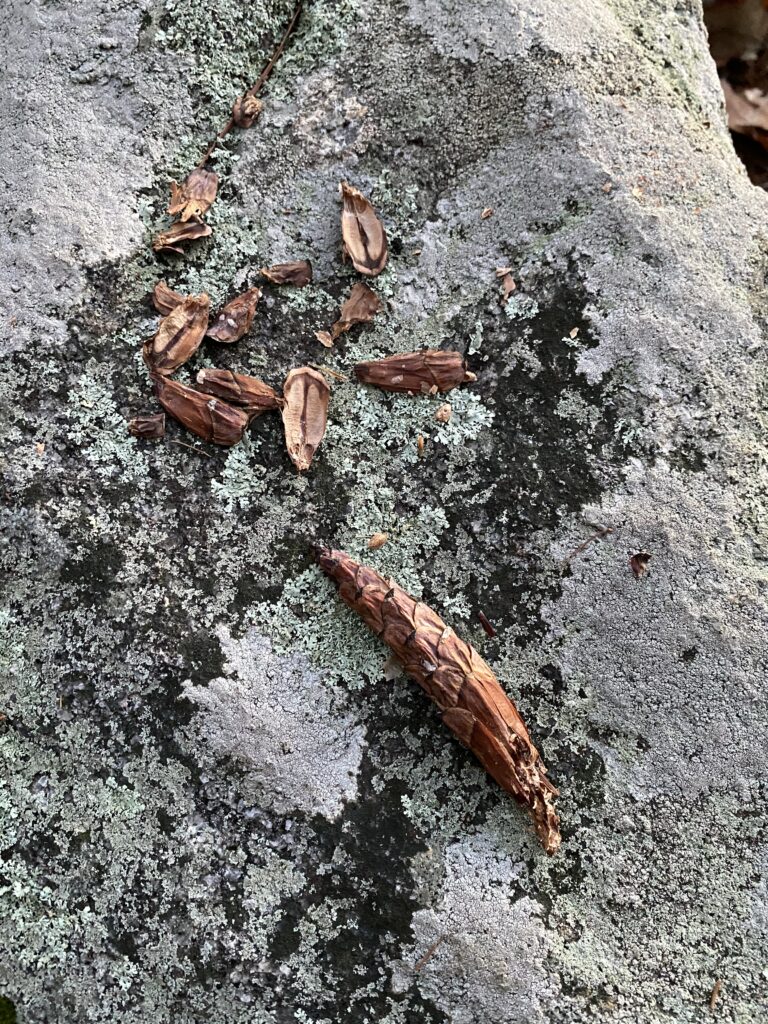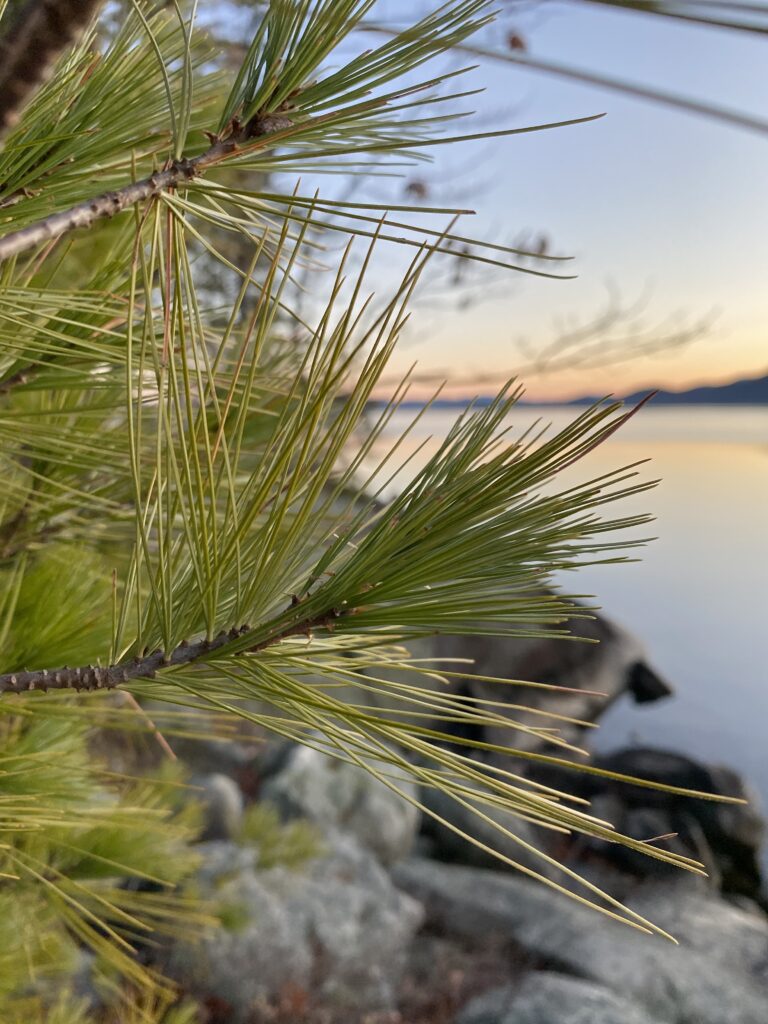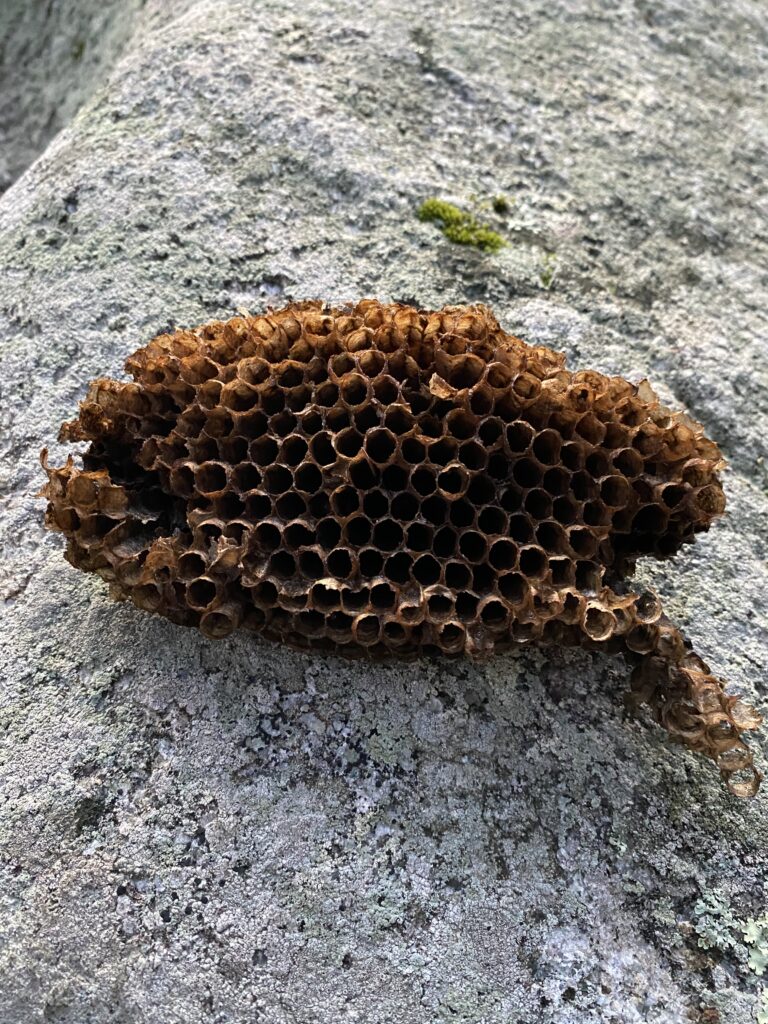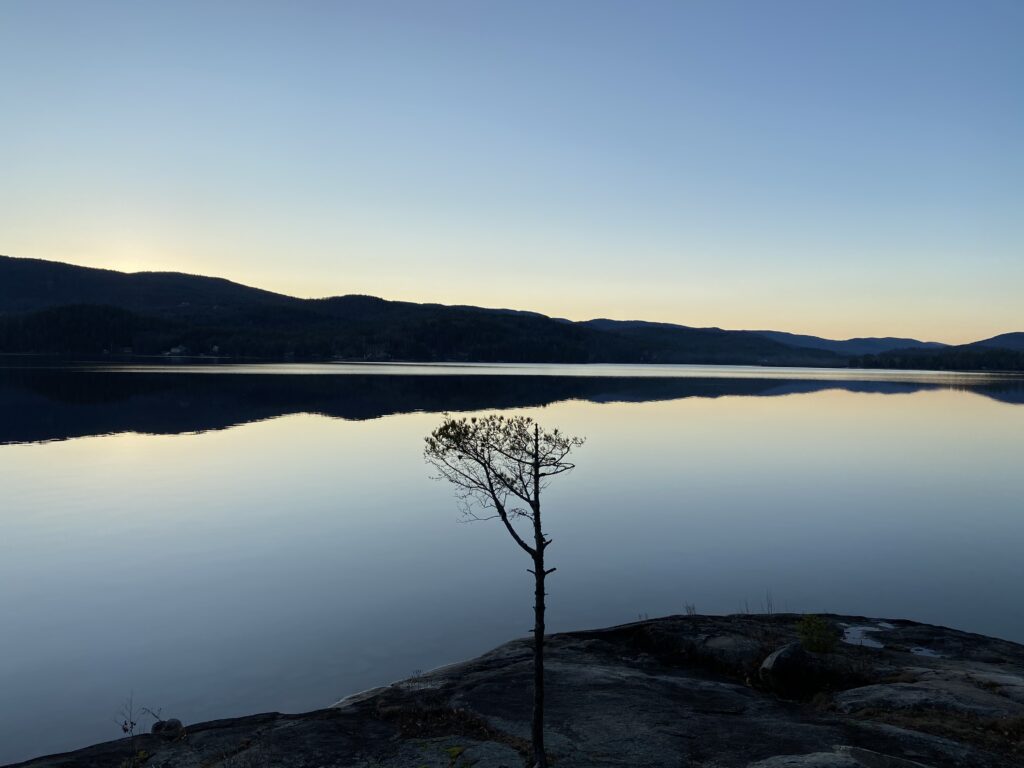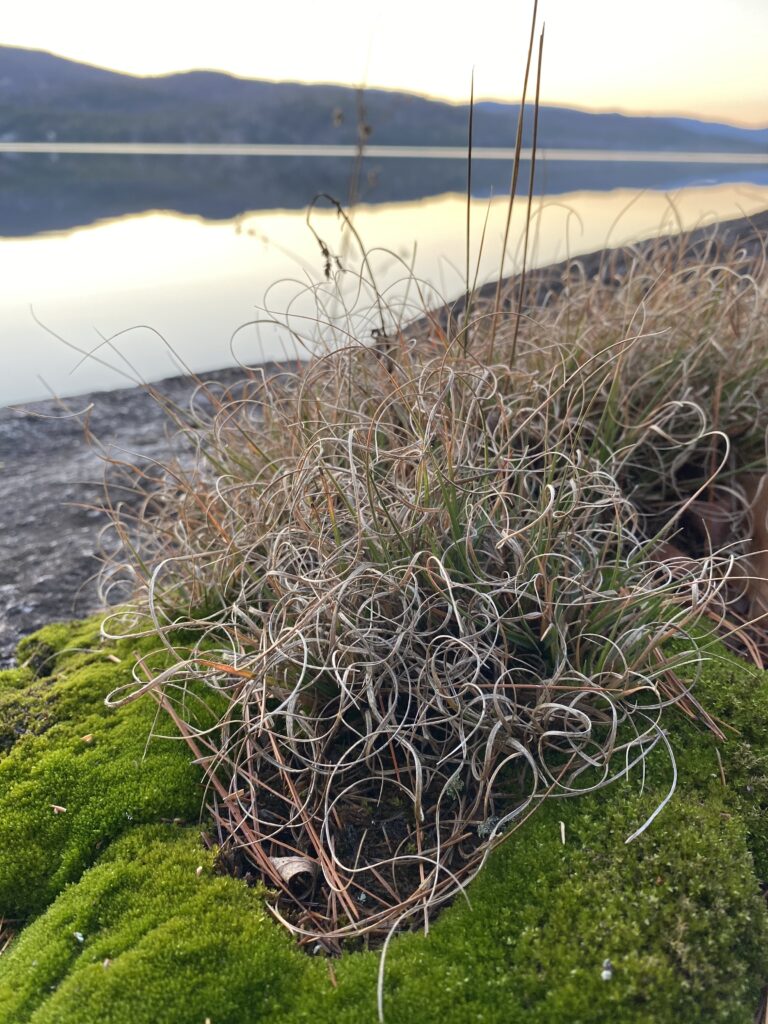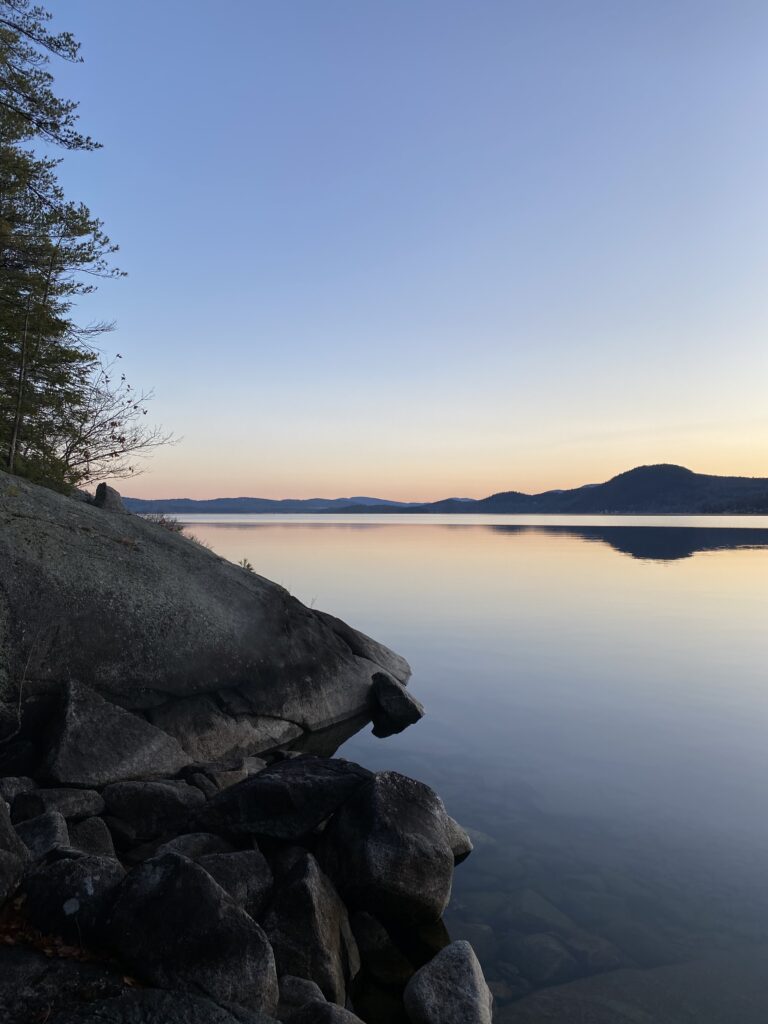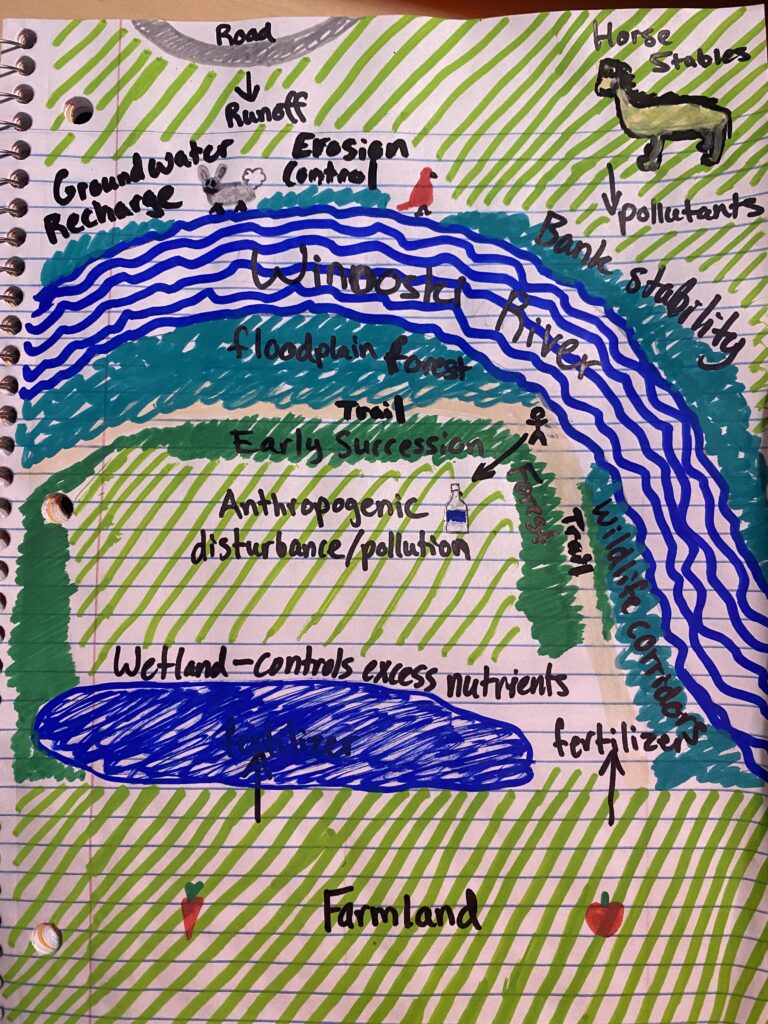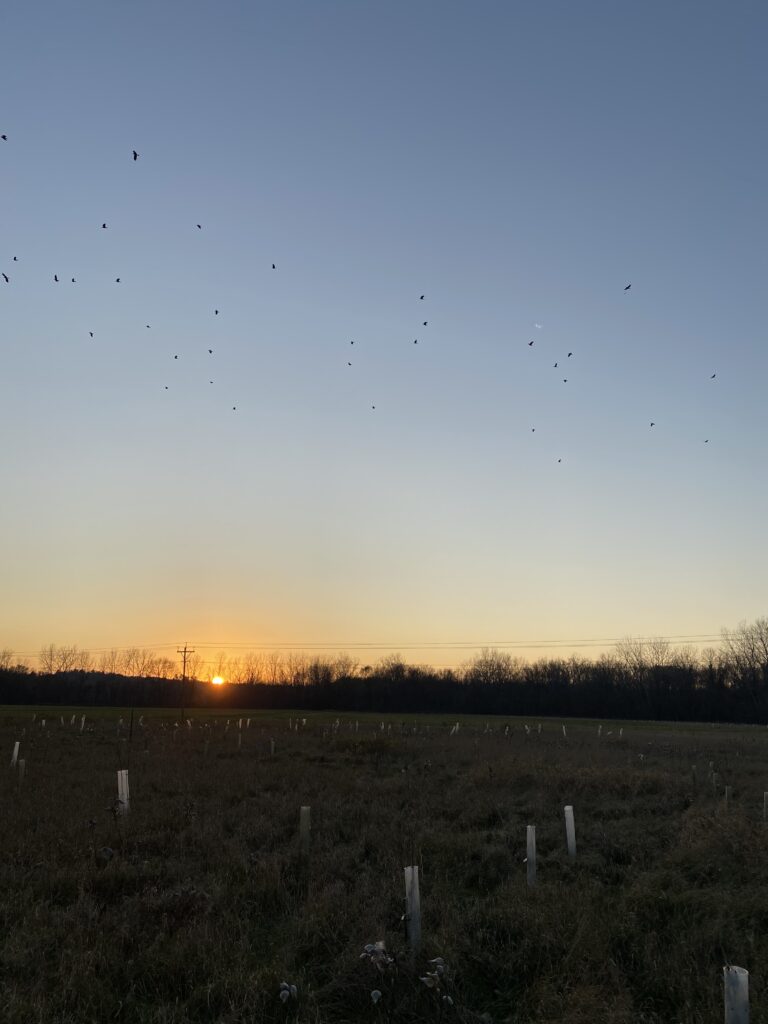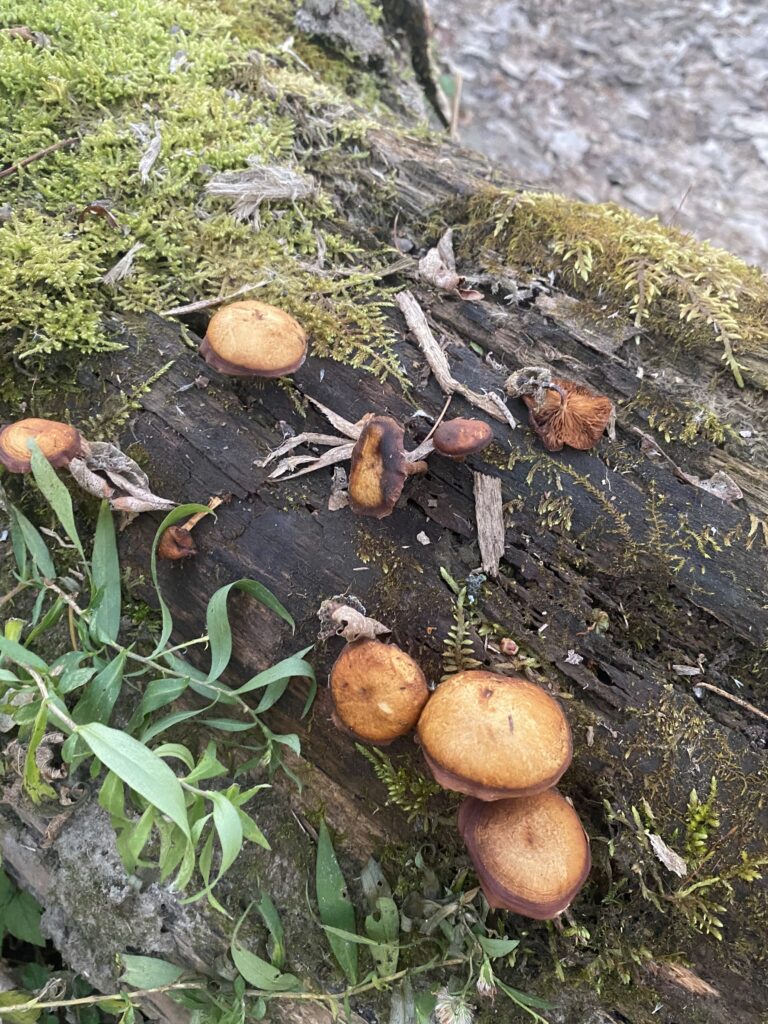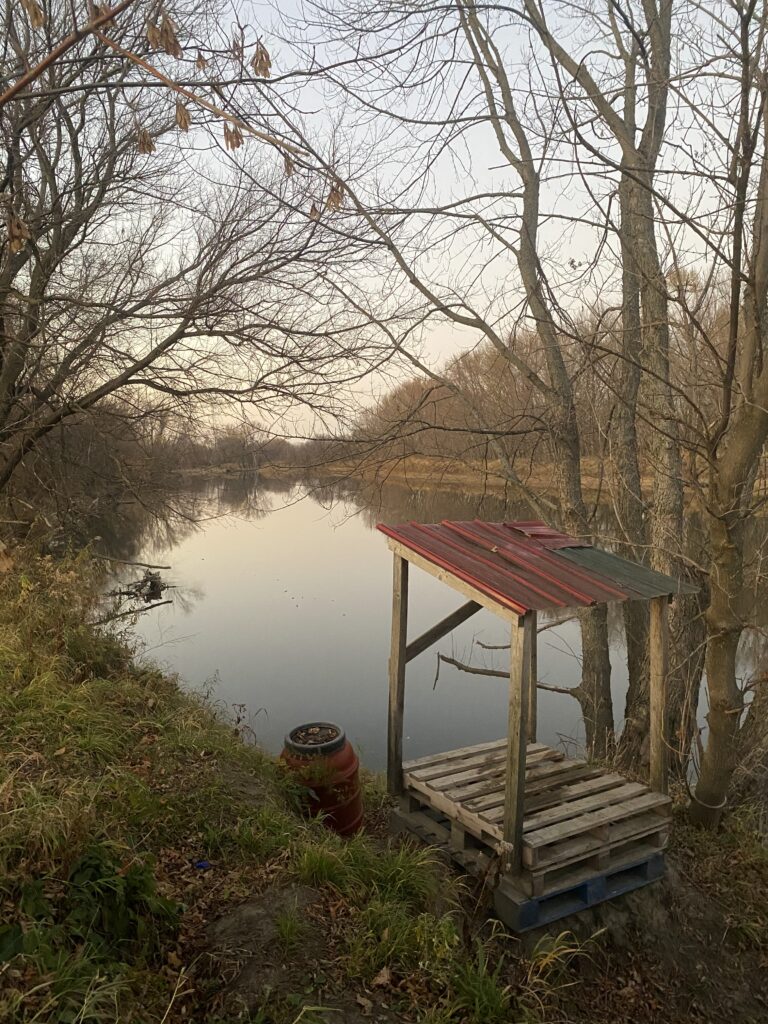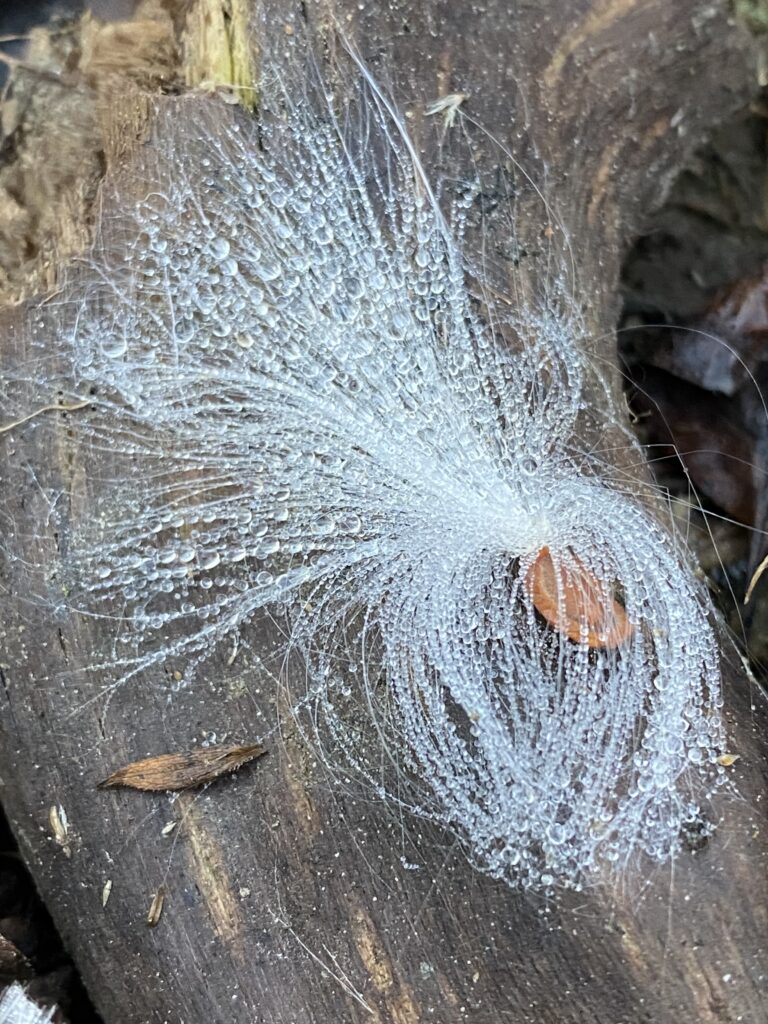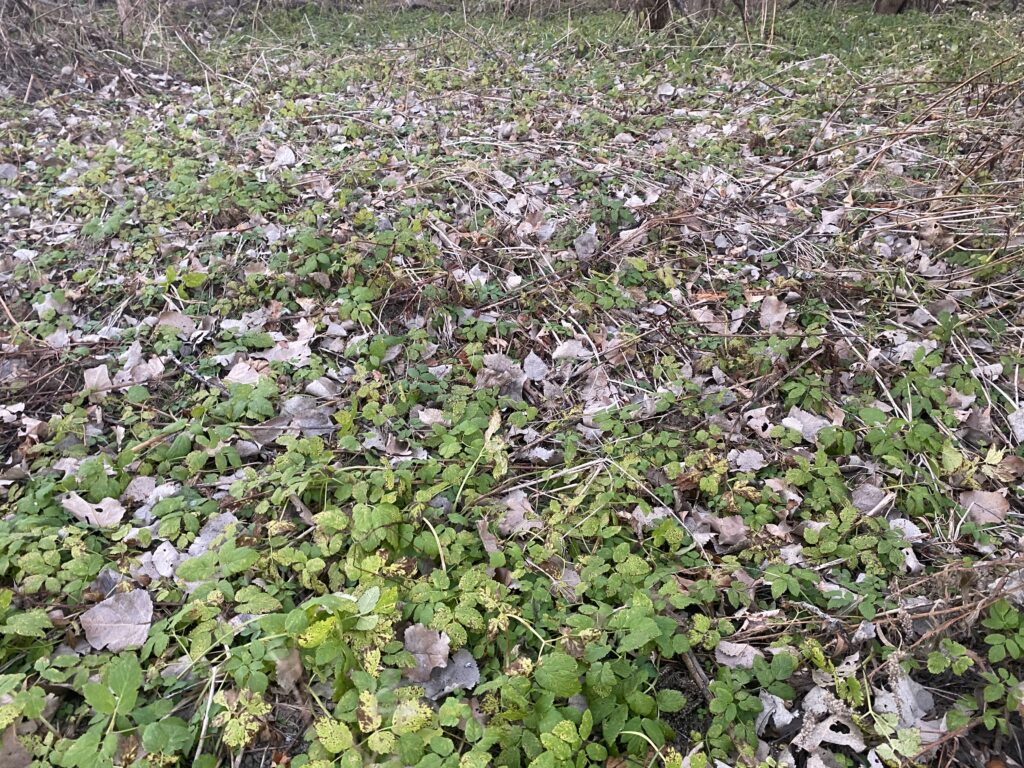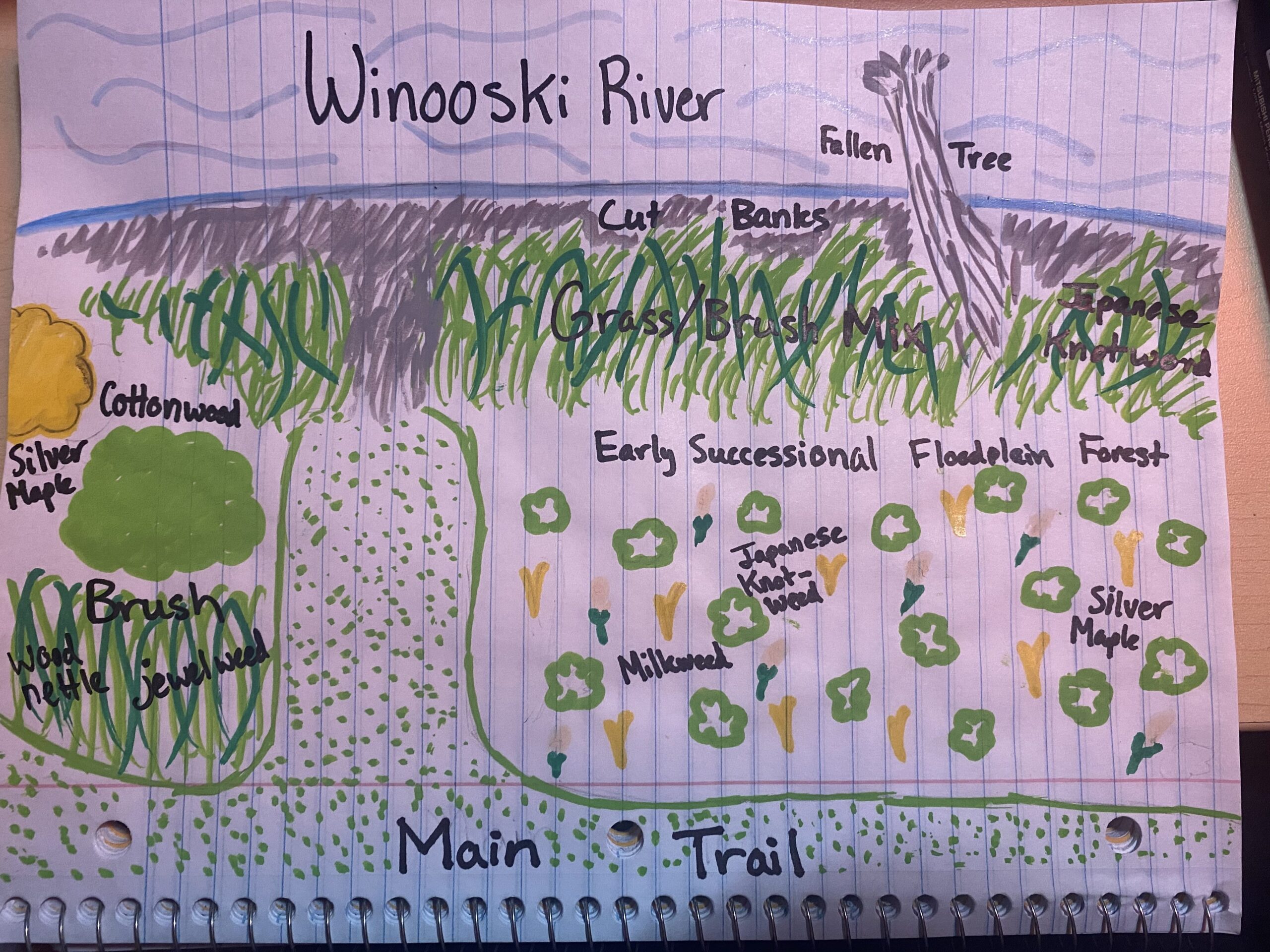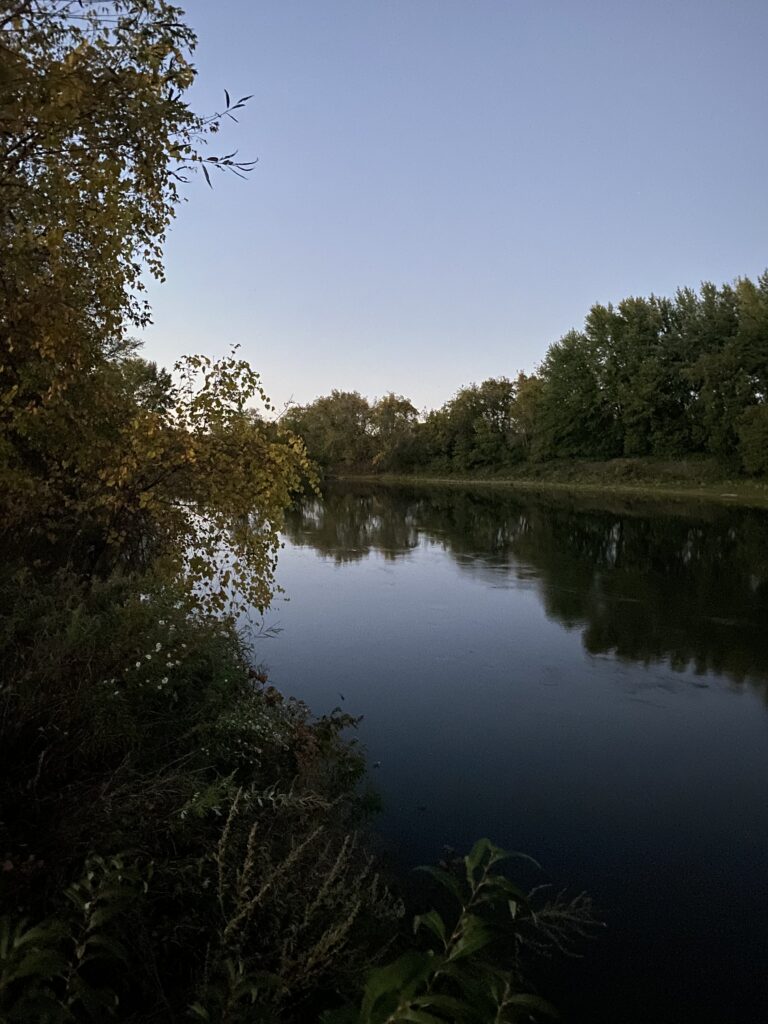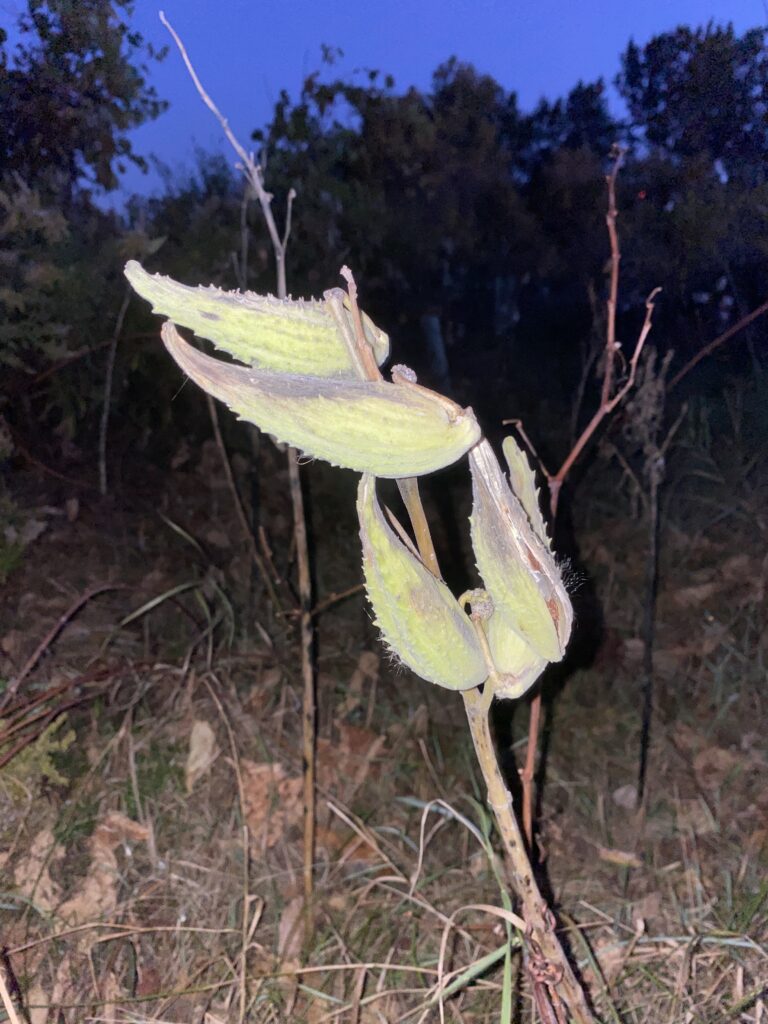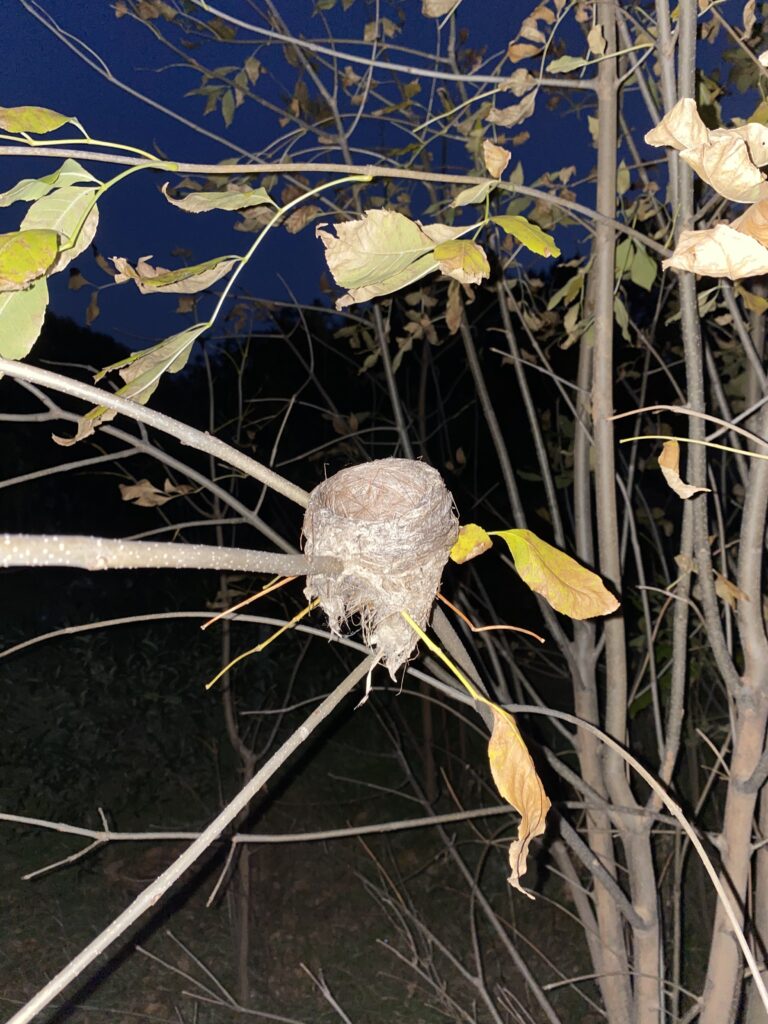During my final trip to the Intervale this semester, I was welcomed into Mckenzie Park by this curious garter snake. After studying each other for a couple of minutes, we both went on our ways.
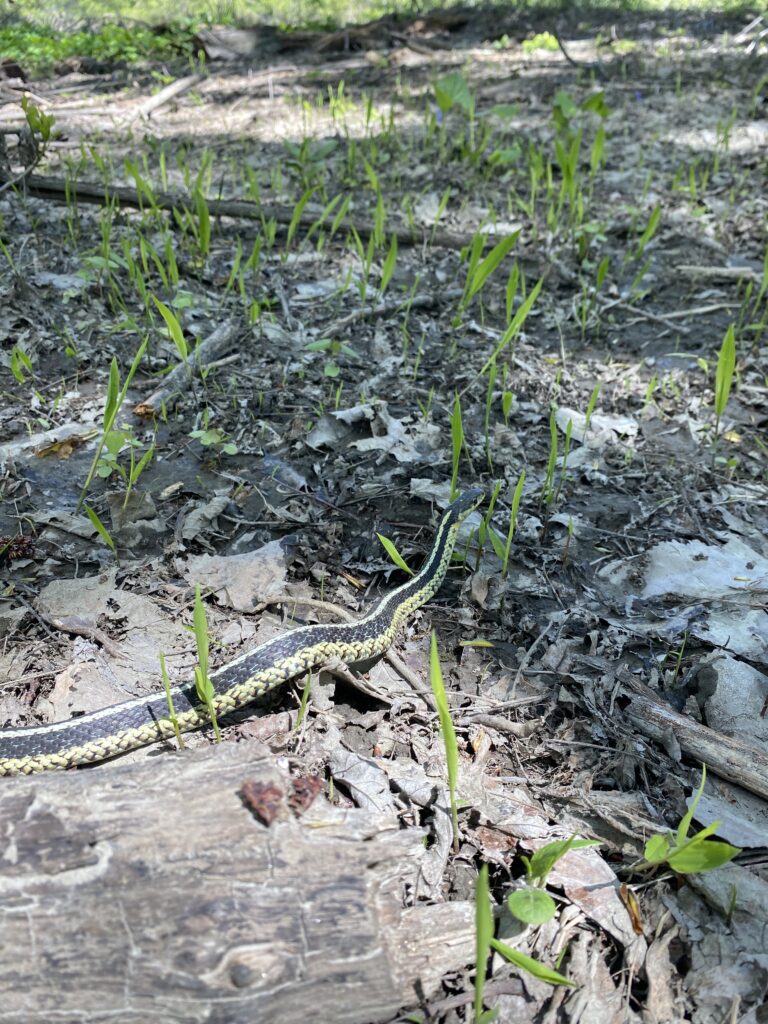
I walked further alongside the Winooski River, noting the plethora of new life that has only arisen in the past few weeks. Using iNaturalist, I was able to identify these mushrooms as the Dryad’s Saddle mushrooms, due to the appearance of shingles on the fungi’s surface, as well as the squishy pores present beneath the caps.
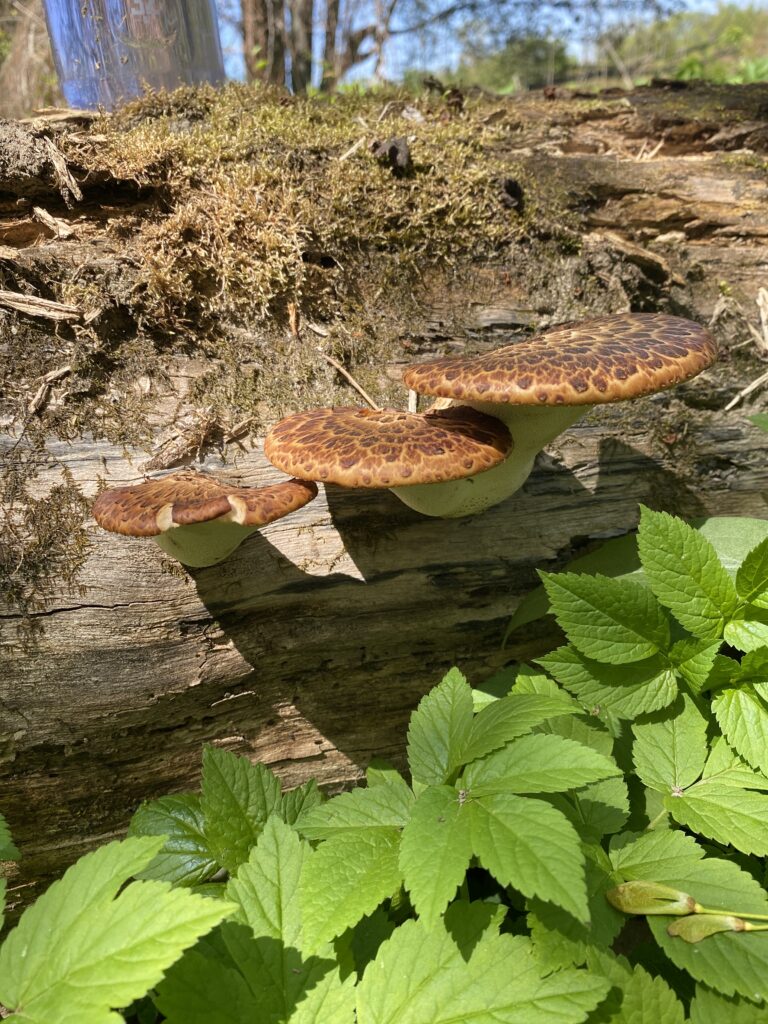
As Spring is in full bloom, I was able to witness the flourishing plants of the Winooski River floodplain. While poison ivy seems to run rampant throughout this forest, keystone plant species including ostrich fern still dominate much of the forest floor.
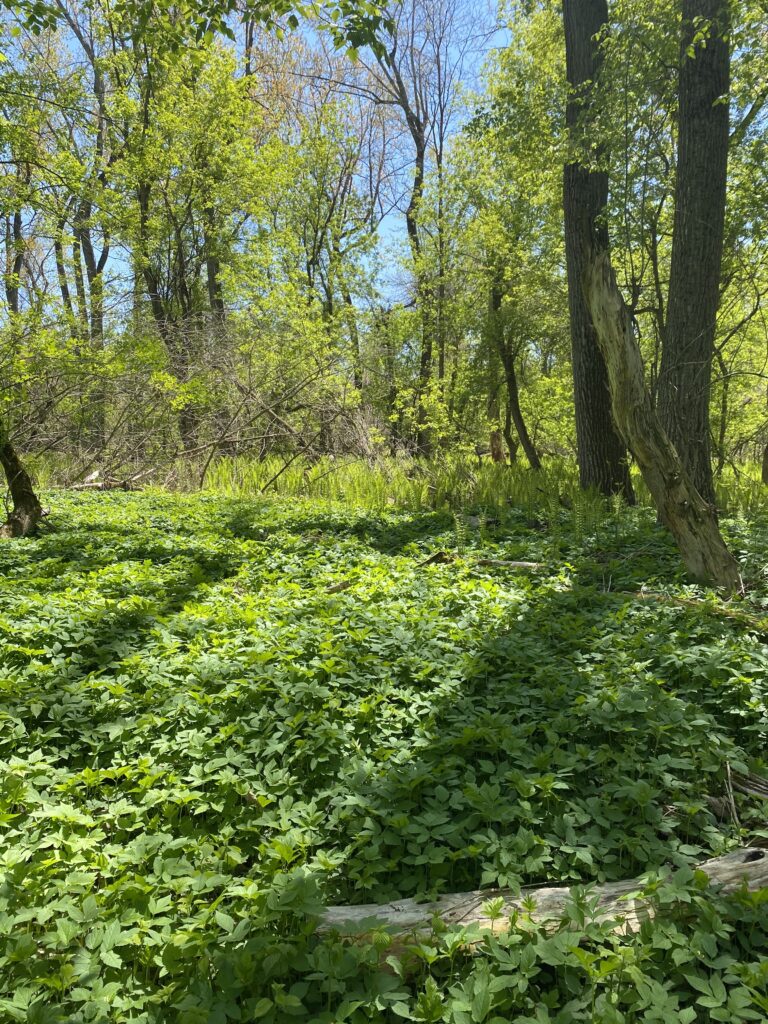
Large tree species like the Silver Maple make up much of Mckenzie Park’s plant life, although buckthorn is often seen invading the space of these key species.
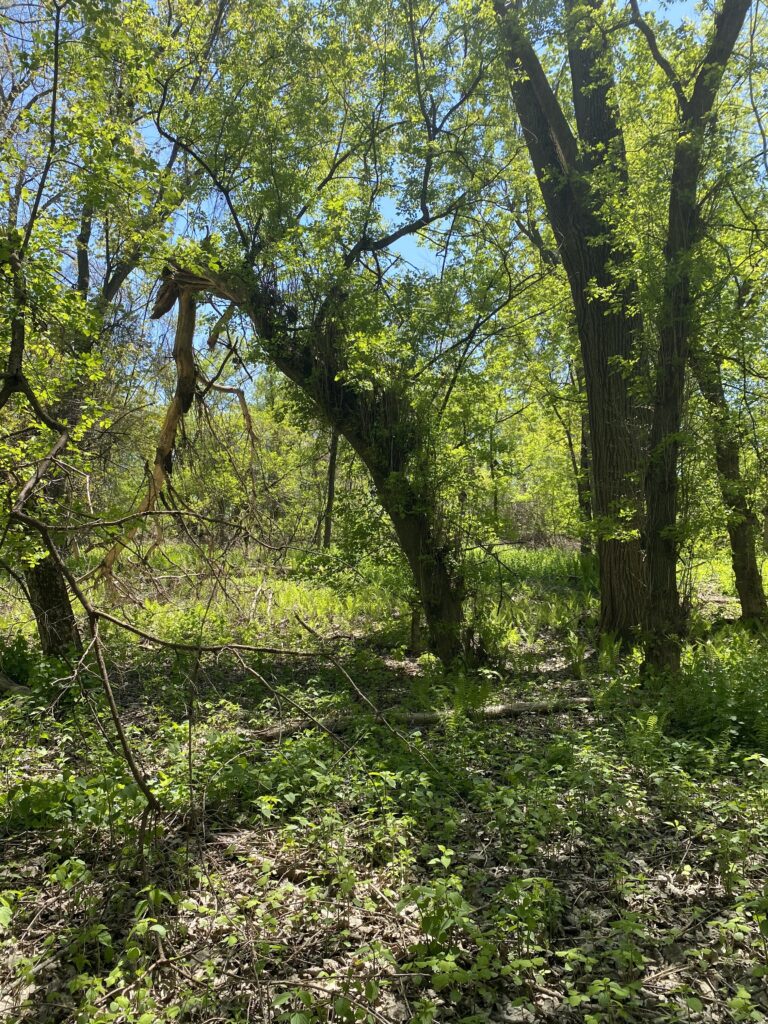
During my trip to Mckenzie, I was lucky to have witnessed a variety of active migratory birds. I saw three communing goldfinches, as well as two pairs of Baltimore orioles. I was lucky enough to get a number of great shots (for an iPhone) of these birds searching for nourishment.
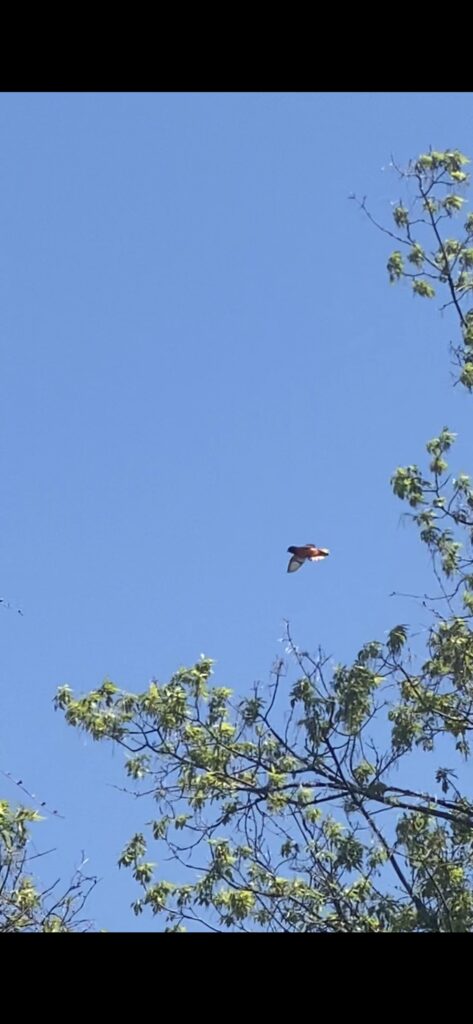
As I walked through the woods, I couldn’t help but appreciate this place’s natural beauty, even though it is still extremely impacted by human activity. Our impact is definitely felt by the natural workings of this ecosystem, as agriculture and urban runoff often destabilize the banks of the Winooski River, while negatively impacting the river’s overall water quality. Even my own presence in this ecosystem is felt by numerous forms of life, so I must be mindful of the path I walk.
As I passed by flourishing fields of kale and other vegetables, I couldn’t help but recognize how much we depend on the natural processes that occur here, to bring nourishment and livelihood to our own kind. Like any living being, we as humans depend on nature and other life, so that we can carry on our own fulfilling lives.
The truth is that we are all individual pieces of one whole ecosystem. So, it is paramount that we work together for the betterment of all that we depend on, and all that depends on us.
